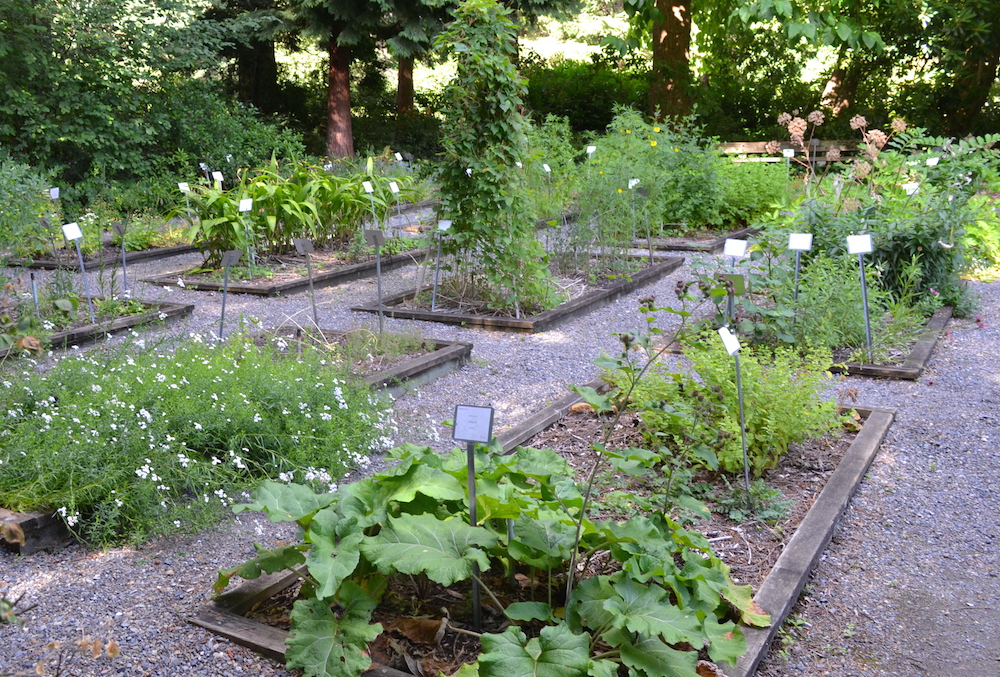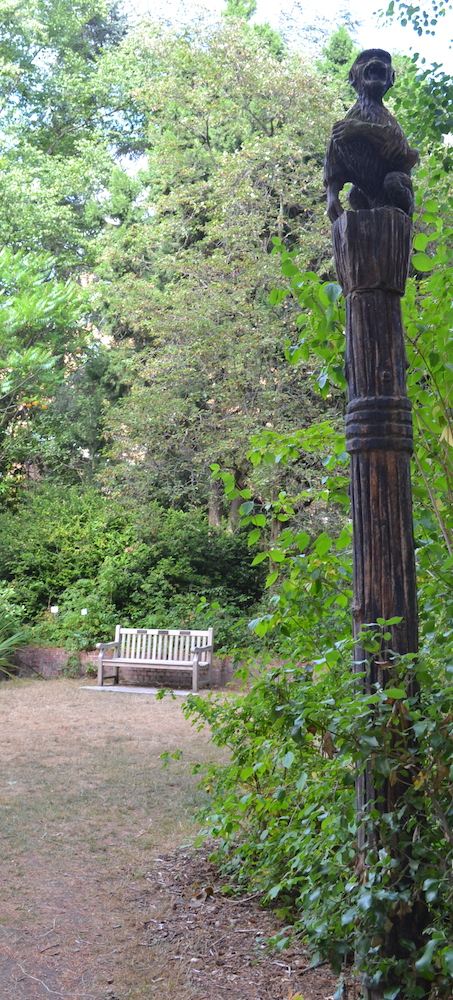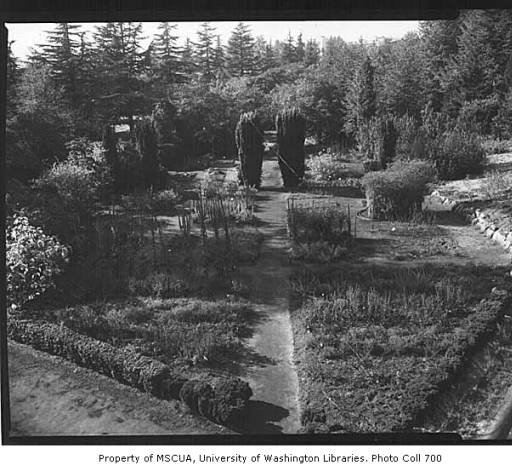
UW's ENVIR 480: Sustainability Studio class in the Program on the Environment presents students with a sustainability topic which they engage in as part of an experiential learning course. The topics change each quarter - this spring, the students researched the UW's environmental history. This is part of a series of posts by the students on some of the information they uncovered.
Founded in 1911, the UW Medicinal Herb Garden is home to more than 1,000 species of plants used by contemporary medicine and in traditional Native American methods. The garden is located between Benson Hall and the Botany Greenhouse, covering a total of two and a half acres.
Going through the garden, which is open to the public, is a pleasant walk. It is open to the public and has many paths winding through the plants. The garden is a place for botanists of all levels to come and study herbs and other plants, some of which are in plants and other which freely grow along the edge of the garden. Harvesting or using any of the herbs in the garden is strictly prohibited, both to preserve the plants, as well as to protect people. Some of the plants in the garden are toxic to people, and others have only certain parts that are safe.
 The garden is divided into seven sections. The main section and formal entrance is Cascara Circle, which is guarded by two monkey statues that represent the Hindu deity Hanuman. This main circle also is mostly filled with plants native to the Pacific Northwest, as the garden is first and foremost a northwest garden.
The garden is divided into seven sections. The main section and formal entrance is Cascara Circle, which is guarded by two monkey statues that represent the Hindu deity Hanuman. This main circle also is mostly filled with plants native to the Pacific Northwest, as the garden is first and foremost a northwest garden.
Keith Possee is the caretaker of the garden, and maintains a blog at uwmedicinalherbgarden.org, where he details the plants in the garden and the efforts it takes to keep it in good order. In the blog's about section, he describes his duties as “transplanting, saving seeds for our international seed exchange program, researching medicinal plants to add to the collection, updating spreadsheets, starting seeds for the garden, resurfacing the gravel pathways, weeding, composting or building new borders for the beds etc.” If there is something in the garden that needs doing, Keith gets it done.
Overall, the UW Medicinal Herb garden is a wonderful place for people looking for a break from the crowds of campus. The garden has a long tradition of being a place for people to learn and rest, and with over 1,000 species of plants, the garden will continue to preserve both local and non-local species.
By William Smyth May
For more information on the environmental history of UW, see our interactive timeline "A Century of Sustainability" at sustainability.uw.edu/timeline, including this historical view of the Medicinal Herb Garden:
